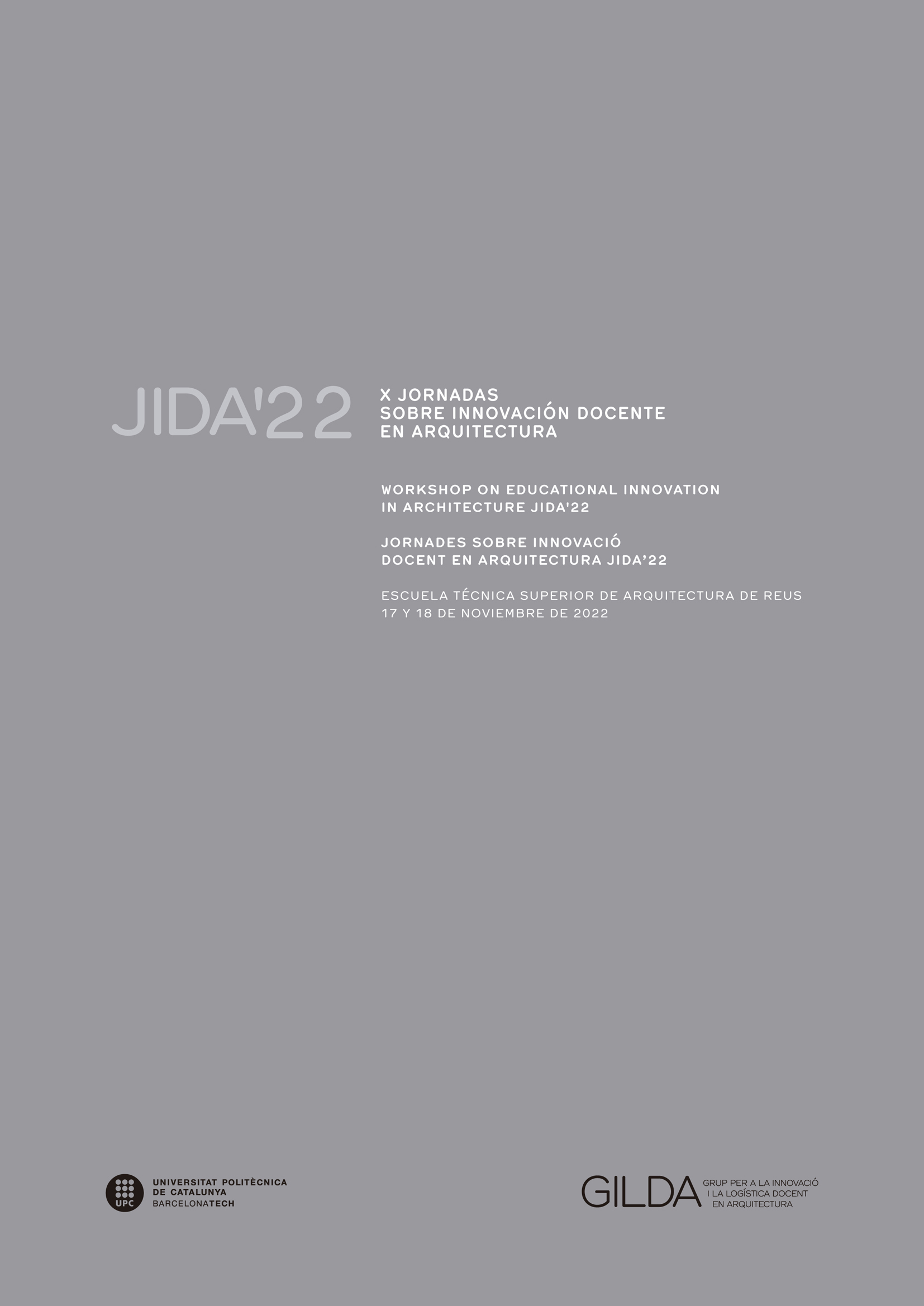El collage como medio de expresión gráfico plástico ante los bloqueos creativos
DOI:
https://doi.org/10.5821/jida.2022.11616Palabras clave:
collage, bloqueo creativo, expresión gráfica, recurso expresivo, creatividadResumen
¿Cómo surge la creatividad? ¿Hay claves, reglas, mecanismos para mantenerla a raya y que nunca falle? Con frecuencia, cuando el ser humano se enfrenta al desafío de crear algo desde cero para dar solución a un problema, surgen dudas. Estas inseguridades son fruto de nuestra capacidad creativa, pero de dónde surge nuestra creatividad. No son pocas las investigaciones sobre cómo afectan las inseguridades a la creatividad. Con el motivo de evolucionar y actualizar la pedagogía de la enseñanza se introduce el collage en el aprendizaje de los estudiantes para explorar los límites de la creatividad. Se escoge esta técnica plástica en la búsqueda del medio que les ayude a poder expresarse más allá del manejo exacto de la técnica. La superposición del concepto frente a la técnica.
Citas
ARAGÓN, Louis. (2001). Los colages. Madrid: Síntesis.
BENJAMIN, Walter. (1972). Iluminacines II. Poesía y capitalismo. Editorial Taurus, p. 183.
CHÁVEZ, Rosa; GRAFF-GUERRERO, Ariel; GARCÍA-REYNA, Juan; VAUGIER, Victor y CRUZ-FUENTES, Carlos. (2004). Neurobiología de la creatividad: resultados preliminares de un estudio de activación cerebral. Salud Mental, 27, p. 38-46.
CRESPO, Marta. (2016). El collage como medio de expresión creativo. Trabajo fin de Grado en Educación Primaria. Facultad de Educación de Palencia-Universidad de Valladolid.
FULLAONDO, María. (2015). Collage: ¡Hay un dibujo en la bañera! En The drawing bazaar: dibujo, arquitectura y todo lo demás, p. 94-103. Universidad Europea de Madrid.
DE BONO, Edward. (1974). El pensamiento lateral. Barcelona: Editorial Paidós.
EISNER, Elliot. (2011). El arte y la creación de la mente. Paidós.
ESCAÑO, Carlos. (2019). Art and Teacher Education. En M.A. Peters (Ed). Encyclopedia of Teacher Education. Springer.
FREIRE, Paulo. (2007). Pedagogía del oprimido (2a ed., 2a reimp.). Siglo XXI de España.
GUTIERREZ, Teresa. (2016). Juegos artísticos con imágenes recicladas. El collage y el fotomontaje= Artistics plays using recycled images. The collage and the pohotomontage. Ardin. Arte, Diseño e Ingeniería, (5), p. 58-72.
MÉNDEZ, Manuel. (1982). El collage infantil: aspectos artísticos y aplicaciones pedagógicas. Barcelona: Sociedad Nestlé.
RAMÍREZ PERDIGUERO, Francisco. (2015). Los bloqueos de la creatividad: un muro entre la posibilidad y la acción. Recuperado de <https://www.gestiopolis.com/los-bloqueos-de-la-creatividad-un-muro-entre-la-posibilidad-y-la-accion/>
RUEDA, Gerardo. (1987). Collages. Madrid, Ministerio de Educación y Ciencia. p 19-20. Texto de José Ramón Danvila.
SALGADO DE LA ROSA, María; RAPOSO GRAU, Javier y BUTRAGUEÑO DÍAZ-GUERRA, Belén. (2019). El panorama gráfico arquitectónico de los ochenta. Arquitecturas de escape y dibujos de resistencia. EGA Expresión Gráfica Arquitectónica, 24(36), 198-209. <https://doi.org/10.4995/ega.2019.10881>
SEGUÍ, Javier. (2008). Anotaciones para un imaginario del dibujar, EGA Expresión Gráfica Arquitectónica, 13(13), p. 70-81. doi: 10.4995/ega.2008.10270
SIKORA, Joachim. (1977). Manual de métodos creativos. Buenos Aires: Ed. Kapelusz.
SIMBERG, Alvin. (1975). Los obstáculos a la creatividad. En Davis y Scott (comps.), Estrategias para la creatividad, p. 123-141. Buenos Aires: Ed. Paidós.
WESCHER, Herta. (1980). La historia del collage. Barcelona: G. Gili.






















